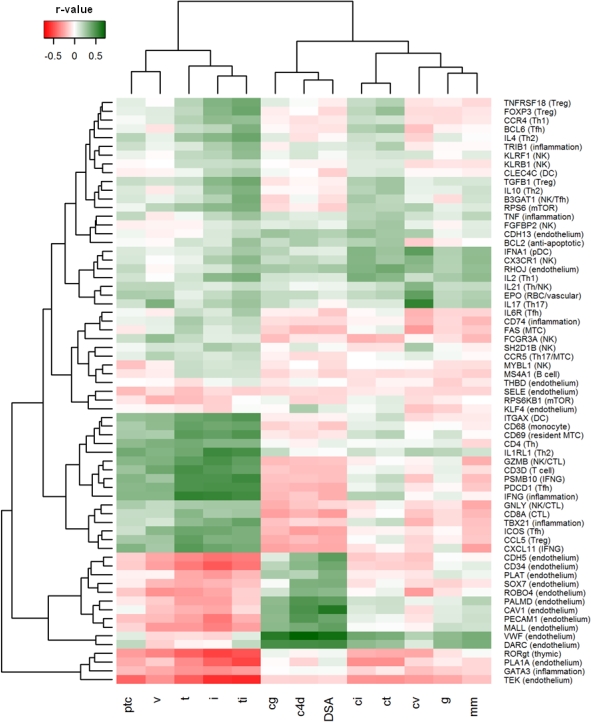Molecular Diagnosis of Antibody-Mediated Rejection in Routine Formalin-Fixed Paraffin-Embedded Nonhuman Primate Renal Allograft Biopsies.
1University of Alberta, Edmonton, Canada
2Harvard Medical School and Massachusetts General Hospital, Boston.
Meeting: 2016 American Transplant Congress
Abstract number: A16
Keywords: Antibodies, Gene expression, Kidney, Rejection
Session Information
Session Type: Poster Session
Date: Saturday, June 11, 2016
Session Time: 5:30pm-7:30pm
 Presentation Time: 5:30pm-7:30pm
Presentation Time: 5:30pm-7:30pm
Location: Halls C&D
Background: In 2013, the Banff classification proposed molecular testing as an adjunct for the diagnosis of antibody-mediated rejection (ABMR) in renal allografts. We analyzed whether mRNA from archival formalin-fixed paraffin-embedded (FFPE) biopsies from nonhuman primates could be tested with the NanoString nCounter gene expression platform to help diagnose ABMR.
Methods: 67 endothelial and inflammation-related genes previously associated with ABMR or allograft tolerance were compiled into a monkey-specific NanoString probe set. RNA was isolated from 105 FFPE renal allograft samples including 80 sequential biopsies from 20 Cynomolgus monkeys that developed chronic ABMR (after tolerance induction but without ABMR treatment) as well as 10 normal and 15 non-normal (e.g. TCMR, BKVN, GN, PTLD) controls. Gene expression was quantified and correlated with clinical, serologic, and histologic features.
Results: Increased endothelial gene expression correlated with transplant glomerulopathy (Banff cg-score), C4d positivity, and donor-specific antibody (DSA) positivity, while increased inflammatory gene expression correlated with Banff ptc, v, t, i, and ti-scores (Fig. 1). Expression of an ABMR-associated 34-gene subset was significantly higher in biopsies with histologic diagnoses of ABMR compared with normal (p<0.001) and non-normal controls (p=0.005). ABMR 34-gene set expression was also higher in C4d positive vs. negative (p<0.001) and DSA positive vs. negative (p<0.001) biopsies. Some animals exhibited increasing 34-gene set expression with histologic ABMR progression while others demonstrated stable or decreasing expression with histologically-persisting ABMR. Animals with pre-ABMR biopsies diagnosed as TCMR showed increased expression before developing histologic evidence of ABMR, suggesting that molecular testing is predictive and more sensitive than histology for early ABMR.
Conclusion: Animal model analysis indicates significant potential for a set of endothelial and inflammatory transcripts in diagnosing ABMR and assessing disease activity.

CITATION INFORMATION: Adam B, Rosales I, Oura T, Smith R, Cosimi A, Kawai T, Colvin R, Mengel M. Molecular Diagnosis of Antibody-Mediated Rejection in Routine Formalin-Fixed Paraffin-Embedded Nonhuman Primate Renal Allograft Biopsies. Am J Transplant. 2016;16 (suppl 3).
To cite this abstract in AMA style:
Adam B, Rosales I, Oura T, Smith R, Cosimi A, Kawai T, Colvin R, Mengel M. Molecular Diagnosis of Antibody-Mediated Rejection in Routine Formalin-Fixed Paraffin-Embedded Nonhuman Primate Renal Allograft Biopsies. [abstract]. Am J Transplant. 2016; 16 (suppl 3). https://atcmeetingabstracts.com/abstract/molecular-diagnosis-of-antibody-mediated-rejection-in-routine-formalin-fixed-paraffin-embedded-nonhuman-primate-renal-allograft-biopsies/. Accessed January 8, 2026.« Back to 2016 American Transplant Congress
